If you love using herbs as much as I do, you will probably agree that fresh-picked herbs taste better than store-bought or dried ones.
Even those of you who have limited available yard or garden space can plant a kitchen herb garden. Herbs are easy to grow, don’t need a lot of space, thrive in just about any type of soil, and many are cold hardy. An ideal location would be a few steps from your kitchen, but any spot that gets about six hours of sun a day is good. By planting herbs that are most often used in cooking, you can pick what you need all summer.
Herbs commonly grow as annuals or perennials. Annual plants last one growing season and die when the temperature hits freezing. Examples of annual herbs include basil, dill, cilantro, parsley, chamomile, chervil, sweet marjoram and summer savory. On the other hand, perennial plants produce new stems year after year. (It doesn’t hurt to mulch in the fall for reassurance.) Examples of perennial herbs include thyme, mint, chives, sage, tarragon, lemon balm, lavender, hyssop and lovage.
For the beginning gardener, I recommend starting with plants or seedlings as opposed to seeds, simple because many commonly loved herbs are difficult to start from seed. Finding and choosing your plants is easy and fun. Herbs can be readily found at farmer’s markets, nurseries, greenhouses and many roadside stands. Controlling the quantity of the plants is harder, and that’s between you and your wallet. A basic kitchen garden contains enough varieties of herbs to mix and blend into different and delicious combinations.
Let’s start with some of the most commonly used:
- Parsley – Parsley is biennial, which means it grows for two seasons and then dies and needs to be replaced. The feathery-textured herb (curly and Italian are favorites) adds a tangy flavor to soups, sauces, salads and dressings. Japanese parsley, which is catching on, is a blend of Italian parsley and celery leaves. It is often used as a garnish and makes a nice addition to soups.
- Sage – A perennial, sage is an attractive garden plant, and some varieties have variegated leaves. Sage is traditionally used in breads and dressings that accompany turkey and pork. This evergreen herb with a strong flavor comes in many varieties. ‘Berggarten’ from Germany is a hit with cooks (especially for turkey stuffing), and popular pineapple sage sweetens desserts. Hardy in Zones 4-8.
- Rosemary – A perennial and a member of the mint family, rosemary is one of the oldest herbs known to humankind. Through the ages it has been credited with healing wounds, alleviating headaches and improving memory. It is a strong, pungent herb, and a few leaves add a distinctive flavor to breads, poultry and vegetables. It becomes bushy and shrub-like in a few years. Hardy in Zones 4-8.
- Thyme – Another perennial with many varieties. Common thyme grows up to a foot tall and spreads even wider. It forms a fragrant, dense, low-growing ground cover with tiny flowers that can carpet a garden or accent pathways and rock gardens. French thyme has the best flavor for meats and vegetables. It has a distinctive, spicy scent and can be used as a salad garnish or to flavor cooked vegetables. Lemon thyme is a branchy trailing plant that forms mats of aromatic, lemon-scented foliage. Hardy in Zones 5-9.
- Basil – Varieties of this spicy-sweet annual herb range from cinnamon to Thai sweet. Sweet basil is enjoyed for its mild peppery flavor, with hints of mint and clove. A staple in Italian, Mediterranean and Thai cooking, basil can also be used in flower gardens, as border plants and in hanging baskets. ‘Purple Ruffles’ is a good selection if you want purple foliage with lots of texture. Choose ‘Dani’ if you want lemon-scented basil.
- Chives – A perennial, chives have a mild onion flavor that enhances salads, egg dishes, soups and vegetables. Although garlic is the unofficial Herb of the Year, many growers favor milder garlic chives because it’s a “no fuss, no muss” perennial. Snip chive leaves into salads, soups, pasta, chicken and fish. The clover-like purple flowers that bloom in spring are also edible and make a colorful addition to salads. Hardy in Zones 3-9.
- Dill – This annual herb is associated with pickling cucumbers, and is delicious with salmon or potato dishes, and in salads.
- Oregano – A perennial, oregano is one of the several species of wild marjoram that can grow up to two feet tall. Peppery-flavored Greek oregano is used in tomato sauces and to season meats and vegetables. Creeping oregano works beautifully in a pathway or rock garden. Cuban oregano has variegated leaves that have a fuzzy texture, similar to the leaves of an African Violet. Hardy in Zones 5-9.
- Mint – One of the best-loved perennial herbs. The fresh smell and taste of old-fashioned mint can’t be beat in an herb garden. Mints are a family of plants known for their aromatic oils. A few leaves add refreshing zest to a glass of lemonade or iced tea. The many varieties include candy mint, chocolate mint, orange mint and peppermint. Spearmint is ideal for tea, mint jelly and mint juleps. But be sure to contain mint or it will spread invasively. Hardy in Zones 4-10.
Now that we’ve chosen our herbs, we need to plant them. Follow these planting guidelines for a successful herb garden:
- Plant early in the morning or late in the afternoon to prevent the transplants from wilting in the midday sun.
- Dig each planting hole to about twice the width of the root ball of the new plant.
- Space herbs about 18 inches apart to give them room to spread out as they grow.
- Place taller herbs, like sage, rosemary and marjoram, toward the back of the garden. Parsley, cilantro and thyme are good for the front.
- For accents of color in your herb garden, add flowering plants like zinnias and salvia.
- Plant perennials on one side and annuals on the other for easier replanting next year.
- Give the new transplants plenty of water. Once established, make sure your herbs get an inch of water each week throughout the growing season.
- Begin harvesting the herbs as soon as they are mature, but take only a little bit each time you harvest. If you remove more than a third of the plant at one time, it takes longer to recover and produce new foliage.
- To promote branching, keep the tops of the plants pinched back in early summer. With frequent picking, most herbs can be harvested for several months.
Planting a kitchen herb garden will bring you many hours of enjoyment, both by the beauty of the plants themselves and the wonderful tastes they will bring to your cooking. After the work of planting and caring for your herbs is done, the best part is enjoying them. Here are some simple recipes to get you started. Some of the herbs used are different than the ones you may already know.
PrintHerb Sugar
This is a wonderful use for sweet herbs such as lemon verbena, rose geranium, lavender or mints
- Total Time: 5 minutes
- Yield: about 2 cups 1x
Ingredients
- 1/4 cup leaves and flowers of sweet herbs
- 2 cups sugar
- zest of 1 citrus fruit – cut in strips (optional)
Instructions
- Gently bruise the herbs with a mortar to bring out their aromatic oils, then mix them with the sugar and citrus zest.
- Put the herbs, zest and sugar in a jar and cover tightly.
- For the next two weeks, give the sugar a shake or stir every few days to spread the aromatic oils around and to break up any clumps. After 2 weeks, the sugar will be infused with the herbs’ flavors.
- Strain the sugar, discard the herbs and zest, and store, tightly covered.
- Author: Dori Fritzinger
- Prep Time: 5 min
Keywords: herb sugar, sugar, herb
New Potatoes with Butter and Herbs
A wonderful way to use fresh potatoes and your favorite herbs.
- Total Time: 35 minutes
- Yield: 6 servings 1x
Ingredients
- 2 pounds small potatoes
- 1/2 to 1 tsp sea salt
- 1/2 cup unsalted butter, melted
- 1/4 cup finely chopped mixed herbs: marjoram, chives, lemon basil, etc. (gardener’s choice)
- freshly ground pepper to taste
Instructions
- Scrub the potatoes, but don’t peel them.
- Bring 3 quarts of water to a boil with the salt. Stir to dissolve the salt, then add the potatoes.
- Boil over medium heat until the potatoes are fork-tender, 15 to 20 minutes, depending on the size of the potatoes.
- Drain the potatoes, then toss them in a bowl with the butter and herbs.
- Season with pepper and serve.
- Author: Dori Fritzinger
- Prep Time: 15 min
- Cook Time: 20 min
Keywords: potatoes with butter and herbs, potatoes, herbs, butter
Red and Golden Beets with Dill
Baby golden beets mixed with the snap of fresh dill makes this dish a wonderful side. Can be served room temperature or well chilled.
- Total Time: 1 hour 5 minutes
Ingredients
- 2 large red beets
- 20 golden or Chioggia beets
- 2 small red onions
- 3 tablespoons champagne or white wine vinegar
- sea salt and freshly ground black pepper to taste
- 10 leafy flat-leafed parsley or cilantro sprigs
- 1 tablespoon chopped dill leaves
Instructions
- Steam the large beets until tender but still firm when pierced with a knife, about 35 minutes. Steam the small beets until tender-firm, about 20 minutes. Peel and trim the red beets. Cut them into halves and quarters. Skin the small beets and trim, if necessary. Leave them whole.
- Peel, then thinly slice the onions into rounds, toss with the vinegar, sprinkle with salt. Refrigerate for at least 20 minutes.
- The beets can be thinly sliced and placed with marinated onions on top of fresh salad greens, dressed in vinegar and oil, and garnished with parsley. They are also very tasty served as a vegetable side.
- Author: Dori Fritzinger
- Prep Time: 20 min
- Cook Time: 45 min
Keywords: red and golden beets with dill, red beets, golden beets, dill, beets, herbs

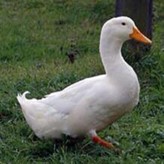
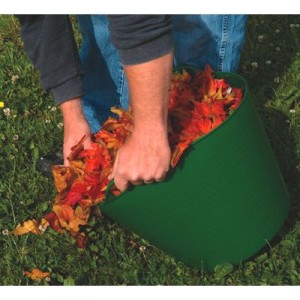









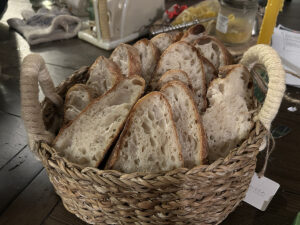




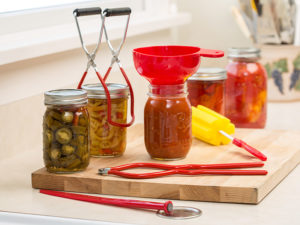




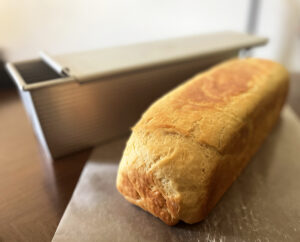

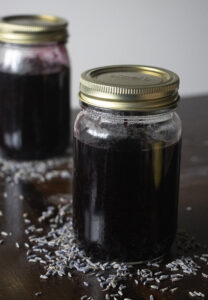







On the recipe for “New Potatoes with Buttter and Herbs”, it calls for 2 cups of sea salt!!!! Should it be only 2 teaspoons????? That seems like an enormous ammount to use. I know that sea salt is higher in needed minerals than regular table salt, but years in the kitchen say that this is just too much.
Very good question, Carol! Sorry we missed this- I have contacted Dori and hopefully she will get back soon with a response and correction.
Thanks Carol!! I have fixed it. I do not have any idea how I missed it!! 2 cups – Yuck!!!! I use very little salt – too mush stress on the body. There is so much hidden salt products in our foods now!!
New Potatoes with Butter and Herbs
A wonderful way to use fresh potatoes and your favorite herbs. Makes 6 servings.
2 pounds small potatoes
1/2 to 1tsp sea salt
1/2 cup unsalted butter, melted
1/4 cup finely chopped mixed herbs: marjoram, chives, lemon basil, etc. (gardener’s choice)
freshly ground pepper to taste
Scrub the potatoes, but don’t peel them. Bring 3 quarts of water to a boil with the salt. Stir to dissolve the salt, then add the potatoes. Boil over medium heat until the potatoes are fork-tender, 15 to 20 minutes, depending on the size of the potatoes. Drain the potatoes, then toss them in a bowl with the butter and herbs. Season with pepper and serve.